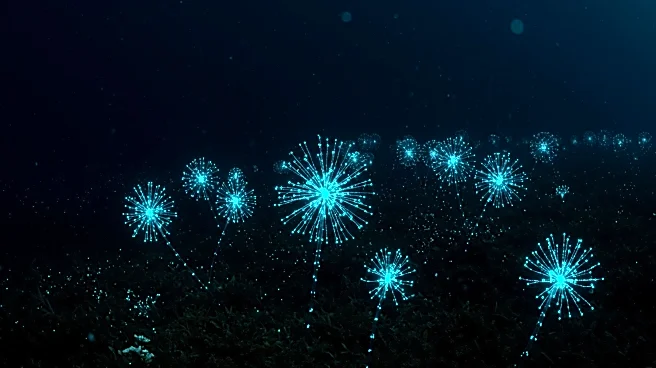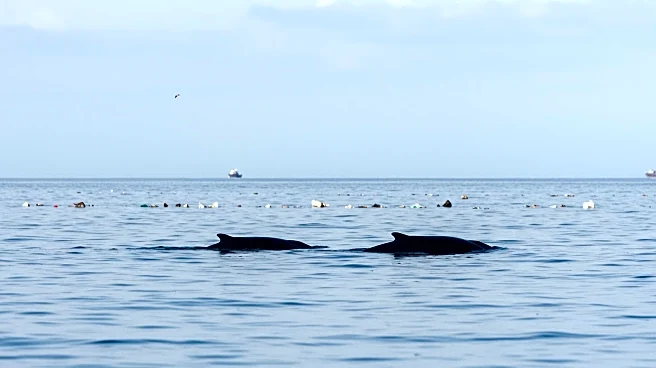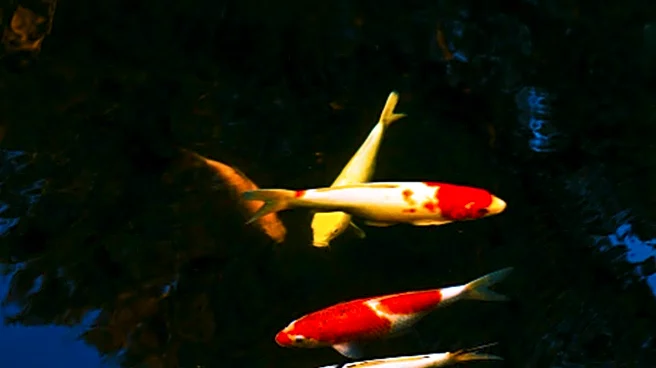What's Happening?
Scientists have resolved a longstanding mystery involving a turquoise glow in the Antarctic Ocean, visible in satellite images since the early 2000s. The glow is located south of the great calcite belt, a region rich in calcium carbonate and coccolithophores, tiny marine organisms with reflective shells. Despite the frigid conditions, researchers discovered coccolithophores living in the area, albeit in smaller concentrations than expected. The study, published in Global Biogeochemical Cycles, involved detailed measurements at various ocean depths, revealing insights into the ocean's carbon cycles and the interaction between coccolithophores and diatoms, another type of plankton.
Why It's Important?
The discovery of coccolithophores in unexpected regions of the ocean has significant implications for understanding global carbon cycles. These organisms play a crucial role in sequestering atmospheric carbon, impacting climate change mitigation efforts. The findings expand scientific knowledge of plankton distribution and their ecological roles, potentially influencing future research and environmental policies. Understanding these dynamics is vital for predicting changes in marine ecosystems and their responses to climate change, which can affect biodiversity and ocean health.
Beyond the Headlines
The study highlights the importance of using multiple measurement methods to gain a comprehensive understanding of marine environments. The presence of coccolithophores in the Antarctic Ocean challenges previous assumptions about plankton habitats, suggesting adaptability and resilience in extreme conditions. This research may prompt further exploration of other 'no man's land' regions in the ocean, potentially uncovering new ecological interactions and carbon cycle processes. The findings underscore the interconnectedness of marine life and its role in global environmental systems.











